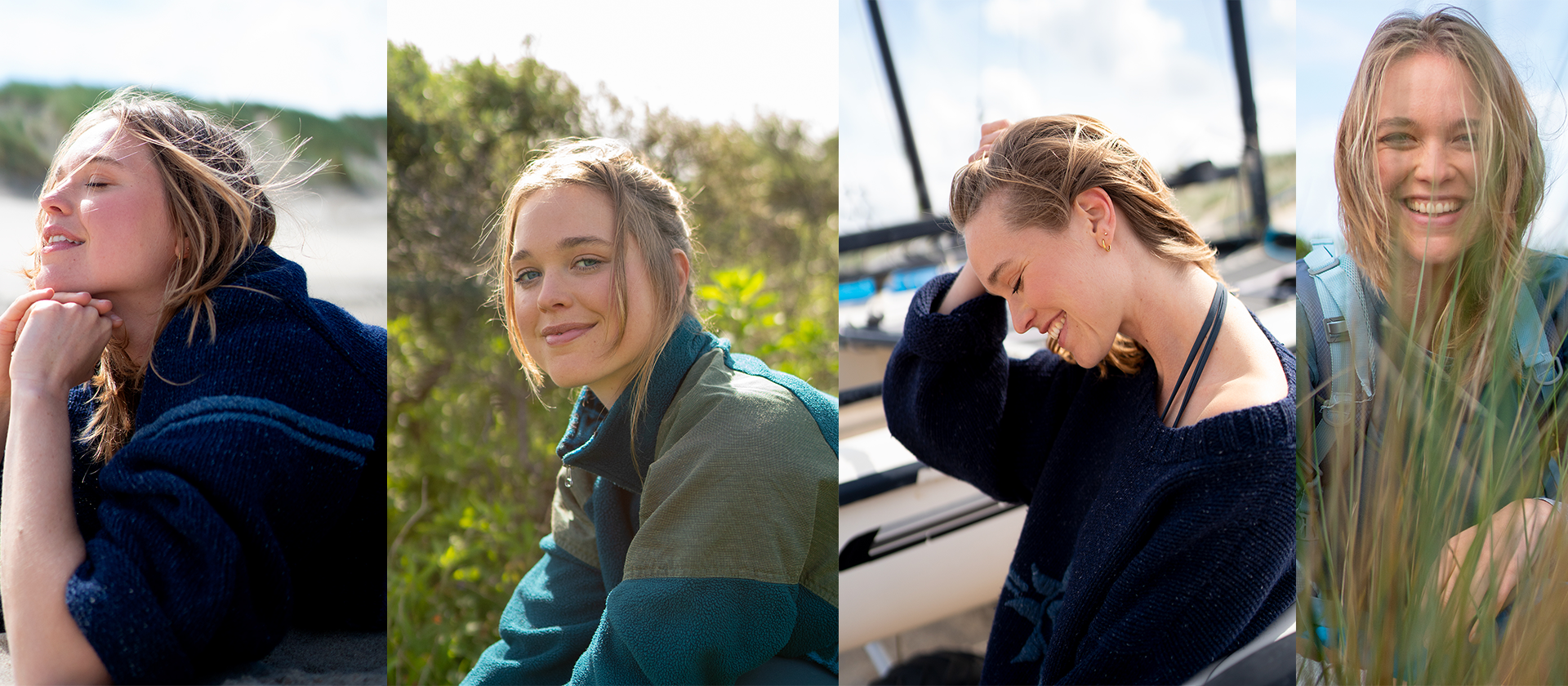Can seaweed be the answer to a future proof fashion industry?

Model and blogger Jana. By photographer: Angela De Vlaming
Jana (30), our green model, is driven by big ideals and always aims for a positive impact. Her time in Bangladesh, where clean water was scarce, made her realize the importance of conscious resource use. This led her to adopt a plant-based lifestyle, focusing on minimizing her water footprint. In addition to working with Belle & Co, where she supports sustainable brands with a long-term vision and writes blogs about her sustainability passions, she is also a policy maker dedicated to reforming our food system with a focus on the planet’s limited resources. Read more about Jana.
If you are a reader of this blog, you are probably familiar with the heavy ecological footprint of the fashion and textile industry. In this blog, I will dive a bit more into the immense amounts of land used for the textile industry and how seaweed might be part of the solution.
Due to the ever-growing consumption of textiles, the textile industry is now one of the most polluting industries in the world. According to the European Environment Agency, textile production has almost doubled in the last 20 years, with an estimated increase of 150% in 2030*.
Textile fibers can roughly be separated into three categories:
- Animal fibers (e.g. wool, silk)
- Plant based fibers (e.g. cotton, linen, hemp)
- Synthetic fibers (e.g. polyester, acryl, elastane)
Synthetic fibers are fossil based and are used in 60% of our clothing. Animal fibers take up about 1% of the total volume and the remaining 40% of clothing is made of plant-based fibers. Currently, to produce all this textile, 37,6 million hectares of agricultural land is needed**. This is about nine times the size of the Netherlands. If we would replace all the synthetic fibers with plant-based fibers, as we should to become fossil free by 2050, and if our consumption would stay the same, the land use to produce this would triple. That means we would need an amount of land that is equal to 27 times the Netherlands.
Clearly, this will be huge a challenge. Since we must become fossil free by 2050 to reach our climate goals, áll industries will start using more land to be able to produce a biobased alternative (think of biomaterials for housing, the chemistry sector and the energy transition). And then we haven’t even talked about land needed to produce our food. Although fibers like linen en hemp have much less negative impact on the environment (less water use, less chemicals), they still need land. What if we could produce fibers without using land? And while we are at it: even without using chemicals and without emitting CO2? It sounds too good to be true, but it might be possible. How? Seaweed.
Seaweed not only doesn’t require land, fresh water, or chemicals; it even filters the water and captures carbon. In fact, seaweed is one the biggest carbon sink we have on this planet. The good news is, there are already several companies experimenting with and using seaweed as an alternative fiber. Pangaia for example is already using seaweed in their clothing, combining seaweed powder with wood pulp. Closer to home, a Dutch company called Zeefier, produces natural dyes made from seaweed. They extract pigments out of seaweed coming from waste streams and simply the ones lying on the beach. This summer seaweed fiber even made its debut on the runway during the Stella Mccartney show.

Summer 2024 Runway Show | Stella’s World
They show a stunning dress made of kelp-based yarn. Compared to cotton, their seaweed-based fiber uses zero pesticides, 70x less water and is completely compostable, with a total breakdown process of a little over two months. Sway is a material startup that is using seaweed as the foundation of all their products. They create plastic free products that are home compostable, like bags for packaging, and recently hinted something with shoes.
Currently seaweed-based clothing might still be the exception, and maybe isn’t price competitive yet. However, if only we would pay the true price for our products, including the environmental costs, it might just be the clean alternative fiber we need. Of course, decreasing our consumption of textiles is essential in this transition and should ultimately be the aim. I just hope that after reading this blog, you became more aware of the land use aspect in relation to the fashion industry and that your mind has opened to an unexpected alternative to textile, one that doesn’t need land. And maybe the next time you walk on the beach, you will look at seaweed differently. It might be your next garment… 😉
*European Environmental Agency, 2020